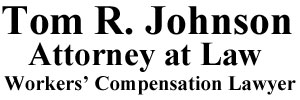There are many reasons why we subpoena records from insurance companies and employers. We need to know the job description and requirements of the job to help facilitate our clients return to work and to determine if they are a qualified injured worker which would entitle them to a retraining voucher and return to work bonus.
Often times the employer files will contain prior records regarding medical treatment and accommodations as well as modified work. In reviewing the initial application for employment we can determine how long our client has worked for the employer as well as their past history of employment, absences and reasons for absentisim.
By review of the records we are able to confirm the salary history, including promotions, demotions or periods of time when work is not available. This can affect the calculation of average weekly earnings which in turn affects the temporary and permanent disability calculations, and ultimately what compensation is owed. Anything negative or positive contained in the employment file regarding the injured workers relationship with the employer can be relevant by affecting our client’s perceived credibility. The records often contain information regarding prior injuries which can help us prepare a defense to apportionment, when the insurance company tries to blame disability on prior injuries. The records alert us to who the supervisors are and other potential witnesses for a myriad of issues that might arise.
A review of the records might reveal any detrimental action taken against our client which could form the basis of a Labor Code 132a violation.
Employer files often contain statements and investigational reports which were not prepared for litigation purposes in these reports can help us describe the mechanisms of injury and determine if there was a serious and willful misconduct claim. We can assess what documented training occurred for our clients. The records can reveal if there were any OSHA violations pertaining to the accident or the safety of the employment which we need to assess if a Serious and Willful misconduct claim occurred for an employer knowingly violating OSHA regulations.
The records can document, or prove an absence of, what notices were provided to our client’s, and when they were provided. This could affect their rights and what doctor’s they can treat with for their injuries.





